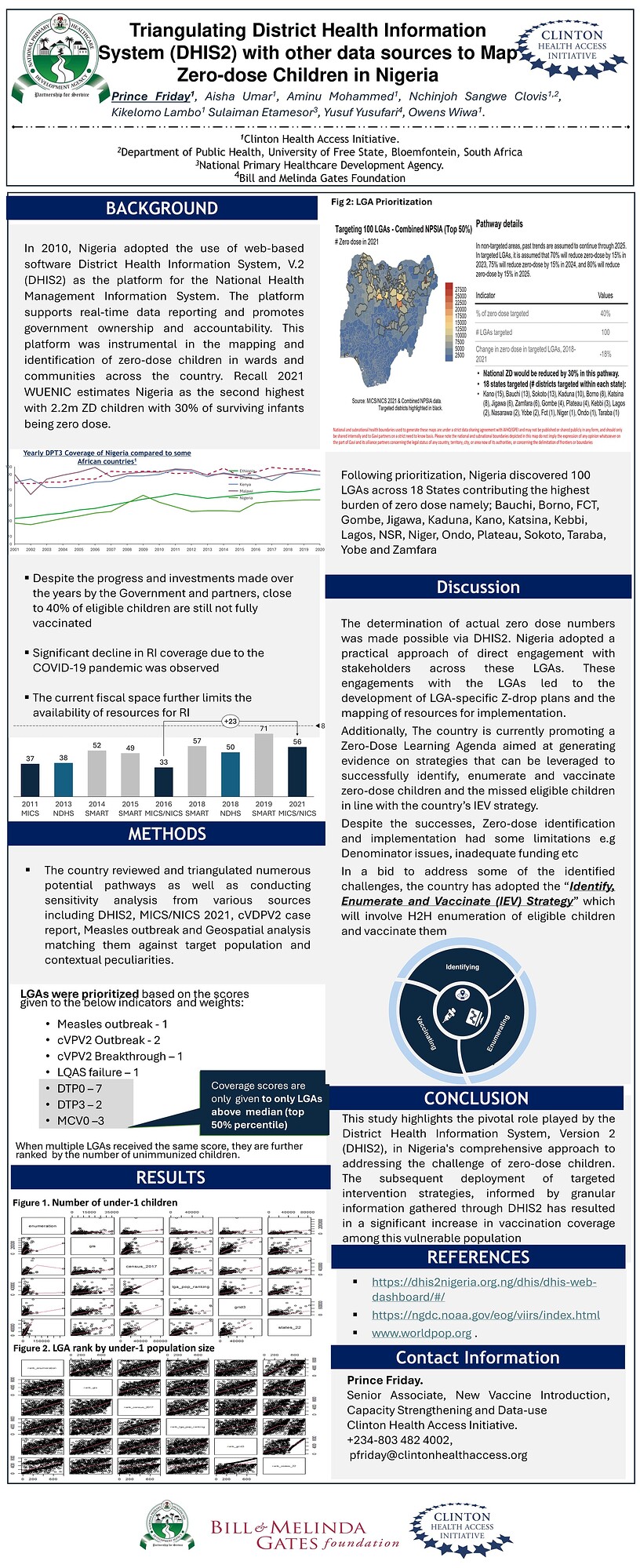This abstract has been accepted at the 2024 DHIS2 Annual Conference

session link: Integrated Analysis/Triangulation
Triangulating District Health Information System (DHIS2) with other data sources to Map Zero-dose Children in Nigeria
Background: In 2010, Nigeria adopted the use of web-based software District Health Information System, V.2 (DHIS2) as the platform for the National Health Management Information System. The platform supports real-time data reporting and promotes government ownership and accountability. This platform was instrumental in the mapping and identification of zero-dose children in wards and communities across the country. Recall 2021 WUENIC estimates Nigeria as the second highest with 2.2m ZD children with 30% of surviving infants being zero dose. Methodology: To map and identify zero-dose children, the country analyzed data points from various sources including DHIS2, MICS/NICS 2021, cVDPV2 case report, Measles outbreak and Geospatial analysis matching them against target population and contextual peculiarities. Results: Following the comprehensive analysis of identified data sets sourced from DHIS2 and other selected sources, 898,902 unimmunized children were identified representing 41% of zero dose burden in Nigeria across 100 LGAs from 18 states. Following the identification of these zero-dose children, Nigeria deployed targeted intervention strategies, resulting in a significant uptake in vaccination coverage among zero-dose children. This proactive approach has subsequently mitigated the prevalence of vaccine-preventable diseases in previously underserved areas, marking a pivotal milestone in the nation’s healthcare trajectory. Conclusion: This study highlights the pivotal role played by the District Health Information System, Version 2 (DHIS2), in Nigeria’s comprehensive approach to addressing the challenge of zero-dose children. The subsequent deployment of targeted intervention strategies, informed by granular information gathered through DHIS2 has resulted in a significant increase in vaccination coverage among this vulnerable population. This approach has not only mitigated the prevalence of vaccine-preventable diseases in previously underserved areas but also signifies a significant milestone in Nigeria’s healthcare trajectory, showcasing the effectiveness of DHIS2 as a tool for government ownership, accountability, and informed decision-making in public health management.
Primary Author: Prince Friday
Keywords:
Zero-Dose, DHIS2, Coverage, Equity, Immunization.
